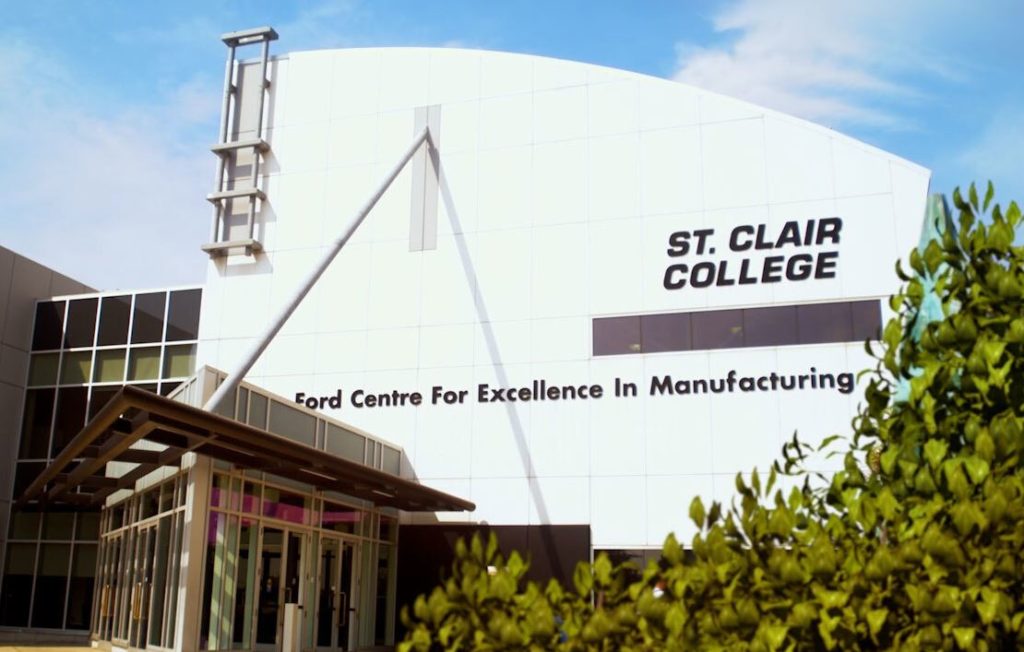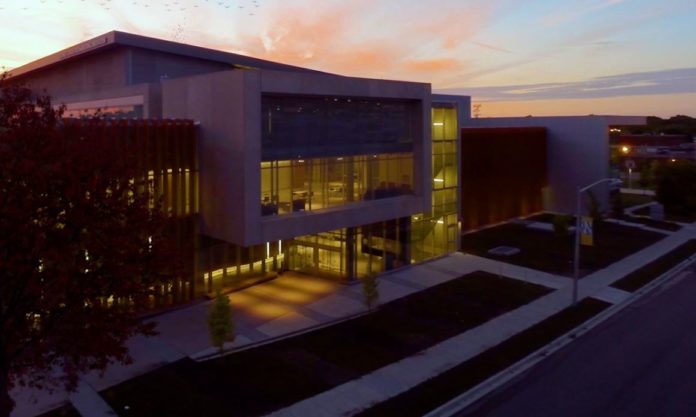Windsor-Essex is home to a widely diverse, skilled, educated and experienced workforce. Building on a strong presence in advanced manufacturing and automation, especially within the automotive sector, the region’s economy is thriving in other industries, including applied sciences, mobility and zero emission vehicles, agri-tech and health sciences.
More than 25 per cent of the region’s workforce is trained in applied sciences, technologies and trades and Windsor-Essex is home to a number of major research facilities and two post-secondary institutions, as well as many facilities and programs dedicated to career-based training.
The University of Windsor has a student population of 16,000 and ranks among Canada’s highest percentage of international students. The university offers 190 undergraduate programs, 65 graduate programs and six professional programs, in eight faculties including engineering and science.
St. Clair College educates 14,000 fulltime students and offers more than 120 advanced diplomas, degrees and graduate certificates focused in technology and trades, business and IT, media arts, health and social services.

Windsor’s two post-secondary institutions fully complement each other, says Peter Wawrow, director of research and innovation at St. Clair.
“The university works more in fundamental, theoretical and early stage research, where we are more about late-stage, proof of concept and prototypes. Both sides are extremely important and provide that continuum. There is a great willingness to work together,” he says.
“Windsor is a medium-sized city but feels like a small town. Having both institutions is so crucial to developing talent and research. It’s easy to build relationships.”
The two institutions have a collaborative relationship when it comes to research and program development and each are tackling workforce needs through degree and diploma programs and with upskilling and reskilling of existing workers through continuing education and microcredentials.
Investment from upper levels of government in Windsor-Essex’s regional automobility strategy has catalyzed great engagement and partnerships between industry and academic organizations, says Tom Schnekenburger, data and mobility science project manager at the University of Windsor.
“There is so much appetite for leveraging each other’s strengths. Everyone provided the resources that were needed and the results speak for themselves. We’ve seen an influx of investment and a focus on talent attraction and creation.”
With the kind of disruption that is underway in the auto industry comes fast-emerging gaps in talent, says Schnekenburger.
“Industry is struggling to find people in so many areas like mechanical and electrical engineering, software development, networking, materials sciences. It’s incumbent on postsecondary institutions, especially the University of Windsor, to focus on critical skills and to align with where the industry is heading.”
The University of Windsor, the first university in the country to establish an automotive engineering program, builds on its strong track record in automotive research in materials and light-weighting, crash safety, and alternative fuels with two pillars in the automobility realm: electric motors and cybersecurity.
The CHARGE (Centre for Hybrid Automotive Research and Green Energy) Labs, led by Dr. Narayan Kar, a Tier 1 Canada Research Chair in Electrified Vehicles, has attracted millions in funding and developed deep partnerships with OEMs and major suppliers, including Ford, Magna International, Newark Corp. and D&V Electronics.
“We have built significant capability in electric motor research. We consider ourselves, and I think others do too, the top in the country,” said Kar. “Windsor-Essex is the perfect place for this. We are surrounded by automotive companies and manufacturers and the region has been an automotive centre for a long time. Now we are positioning ourselves for the future.”
CHARGE is undergoing a major renovation and expansion to grow its work in improving the performance, reliability and durability of electric motors and propulsion controls.
“We are helping to develop cost-effective components and lighter, smaller electric powertrain components, along with the talent and expertise to remain competitive in this industry,” says Kar.
“Windsor has the knowledge and experience to advance electrification. Automotive is a big part of our city and our province. It’s a huge market in front of us with a huge opportunity. Everyone understands Windsor is the place to be. We will remain the automotive capital of Canada in a new electric vehicle world.”
The SHIELD Automotive Cyber Security Centre of Excellence is the only centre of excellence at a university focused on automotive cybersecurity, says Heather Pratt, executive director of research and innovation at the University of Windsor.
“It’s not just about the security of the vehicles and network on the roads but about the OEMs and the supply chain. The supply chain is so integrated and based on just-in-time delivery that it is vulnerable to cyberattacks.”
Led by Dr. Mitra Mirhassani and Dr. Ikjot Saini, SHIELD conducts research and testing, runs scenarios to develop defences and finds ways to defeat evermore sophisticated cyber-criminals.
A large part of SHIELD’s mandate is education and it has launched its first microcredential course to address reskilling and upskilling needs, says Pratt.
“Many of the jobs we are training students for don’t exist right now. But we are preparing them for a new future,” says Pratt. “There is an unprecedented war for talent on right now and that means huge opportunities in the automobility cluster. We are building regional strength so that talent comes to and stays in Windsor.”
The university is the lead organization on a proposed FuturE-Car program, a pan-Canadian consortium of 11 academic institutions, OEMs, supply chain companies, and industry associations. It has a $140 million budget request from the government – with a nearly $50 million commitment from industry – and Kar serves as scientific lead.
“The reception from industry has been very positive and we have the top experts in the country involved,” says Pratt. “This is filling a national gap and will support the transition from the internal combustion engine to EV. The government’s mandate to end sales of ICE vehicles by 2035 requires a path to get there.”
Dr. Ziad Kobti, director of the School of Computer Science, says the university has deep bench strength in cybersecurity, intelligent design, artificial intelligence, internet of vehicles, robotics, data science and mobile edge computing.
“Our 1,600 students are learning the critical skills for the automobility industry. They are needed everywhere – technology, e-commerce, health care, banking, telecommunications. Every industry requires software engineers and developers.”
Experiential learning is built into all programs, says Kobti, and employment after graduation is 100 per cent.
“We can’t produce enough graduates. Our students are getting job offers heading into their final years.”
To fill the talent demand will require reskilling, too. Along with a range of microcredentials and other retraining programs, the university offers a computer science degree in 18 months to those with a degree in any field.
“It’s the responsibility of everyone – industry, governments, educational institutions – to manage this huge transition,” says Kobti. “Talent has to be trained to answer the needs of where we are headed. The transition that we are in is as disruptive as the introduction of the car itself.”
















